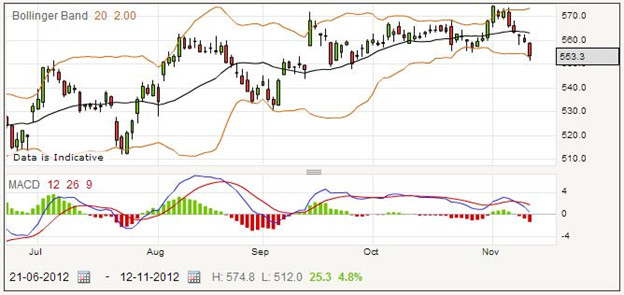When you invest in the emerging markets you can expect some volatility, and as you can see from the daily price chart below this applies even if you have professional managers selecting the investments, as with an investment trust. If you are comfortable with this degree of volatility in your spread betting, then you have the opportunity to make large profits; however you should be wary if you are not experienced in avoiding or reducing risk.

Franklin Templeton Investments is a large asset management group with nearly £1/2 trillion in assets under management. These assets belong to more than 25 million investors, including institutional, professional, and personal investors. The group has more than 80 different funds available, to suit most investment profiles.
Templeton Emerging Markets Investment Trust is the UK’s largest trust operating in the emerging markets, with about £2 billion. It was launched in 1989, and has been fairly consistent in providing returns higher than the benchmark Emerging Markets Index. While it is obviously designed for the longer-term investor, one look at the price chart shows that it is attractive for traders who think that they can profit quickly from the large changes in price.
If you are concerned about the risk of loss, then this chart illustrates one reason that you may consider placing a spread bet with a Guaranteed Stop Loss (GSL), even though it is more expensive in terms of a wider spread. The GSL allows you to set an absolute value to how much you can lose, regardless of where the price goes. You can think of it as a type of insurance for which you pay a premium by the increased spread. The price may go further than you dictate, for example across one of those gaps that you can see in the chart, but your spread betting provider must honour your stop loss guarantee and make it good.
Templeton Emerging Markets Investment Trust Rolling Daily
The Templeton Emerging Markets Investment Trust is a volatile stock, well-suited for those who are adventurous and experienced, and who can profit from its fluctuations. The current price for a rolling daily bet is 552.1 – 554.9. Assuming for example that you have determined that the price should go up, you may place a long bet for £2.50 per point.
If the price goes up, you might find that you can close your bet for a profit when the quote is 623.2 – 626.0. Although your spread betting provider will work it out for you, you should be able to check his calculations. Your spread bet was placed at the price of 554.9, and it closed at 623.2. That means you gained 623.2 minus 554.9 points, which is 68.3 points. You bet £2.50 per point, so this works out to a win of £170.75.
Even when you exercise care and consult technical analysis to determine which way the price will go, you will find that some trades do not work out, with the price going the wrong way. Say in this case the price dropped after you placed the bet, and you closed the trade when the price was quoted at 497.1 – 499.9. Your starting price is the same, at 554.9, but this time the bet closed at 497.1. That is a loss of 554.9 less 497.1 points, which works out to 57.8 points. For your chosen size of bet, this is a loss of £144.50.
If you do not have time to watch the markets all day long, then it can be useful to place a stop loss order on your trade when you open the bet. This will require your spread betting provider to close a losing bet when it reaches the level you set. In this case you might find that a stop loss order would have closed your spread bet when the price was quoted at 516.7 – 519.5. Your loss this time would be 554.9 minus 516.7, 38.2 points, which would figure out to £95.50.
Templeton Emerging Markets Investment Trust Futures Style Spread Bet
For a slightly longer view of the trading market, you may want to place a futures style spread bet, which is usually available for the near quarter, mid-quarter, or far quarter. The current quotation for a far quarter bet on Templeton is 553.4 – 560.1. Say you placed a sell or short bet for £4.50 per point.
Firstly, consider the case where your bet works out, and you make a profit. Perhaps the price will drop to 472.7 – 478.8, and you will decide to close your bet and collect your profit. As it was a short bet, it opened at a price of 553.4 and closed at 478.8. That is a total drop of 74.6 points, and your bet was for £4.50 per point. Multiplying this out, you have won £335.70.
But frequently bets on the financial markets do not work out. Successful traders tend to make their profit by making more on the winning bets, and trying to lose as little as possible on the losers. Perhaps this time the price would go up to 608.3 – 614.5, and you would cut your losses and close the bet. The starting price was 553.4, as before, but this time the bet closed at 614.5, a difference of 61.1 points. For the same size bet, this amounts to a loss of £274.95.
Because you cannot guarantee yourself against losing bets, many traders decide to use stop loss orders when they open the position. This saves them watching the prices, as the provider will close the trade automatically if a certain level of loss is reached. In this case, a stop loss order might have closed the bet when the price went up to 587.6 – 593.2. The closing price in this case is 593.2, so taking away the starting level of 553.4 you find you have lost 39.8 points this time. For your chosen size of stake, this is £179.10.